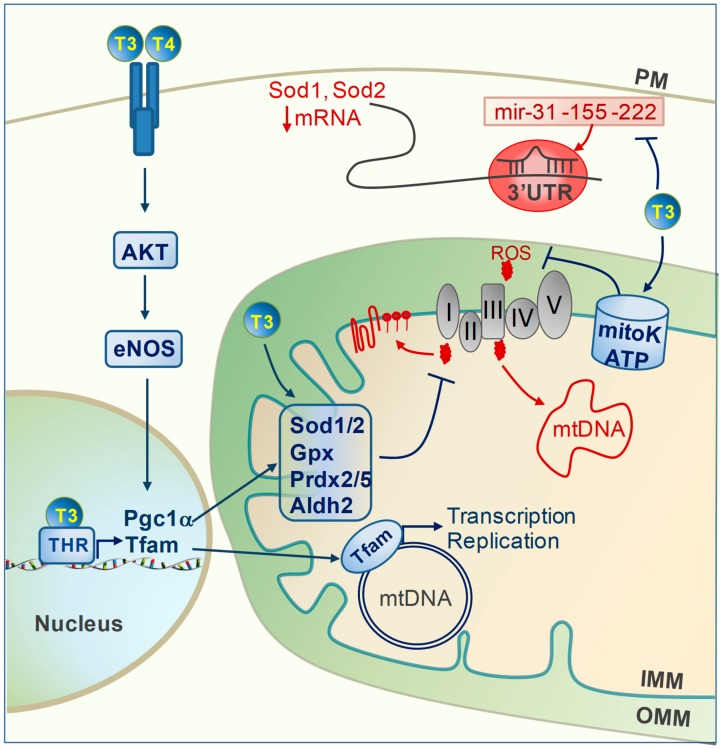Figure 1.
Antioxidant effect of thyroid hormones (TH). Reactive oxygen species (ROS) produced at electron transport chain (ETC) complex I and III can damage mitochondrial DNA, lipids, and proteins. T3 and T4 decrease reactive oxygen species (ROS) production by multiple mechanisms: (1) membrane-initiated pathways as for the AKT/eNOS axis; (2) transcriptional regulation of Pgc1α and Tfam; (3) post-transcriptional regulation via inhibition of mir-31, -155, and -222; (4) activation of the mitoK-ATP protective channel. Effectors modulated by TH are marked in blue. (AKT: protein kinase B; Aldh2:aldehyde dehydrogenase 2; eNOS: nitric oxide synthase; IMM: inner mitochondrial membrane; Gpx; Glutathione peroxidase mtDNA: mitochondrial DNA; OMM: outer mitochondrial membrane; Pgc1α: PPARG coactivator 1 alpha; PM: plasma membrane; Prdx2/5: peroxiredoxin 2/5; Sod1/2: superoxide dismutase1/2; Tfam: mitochondrial transcription factor A; THR: thyroid hormone receptor).

